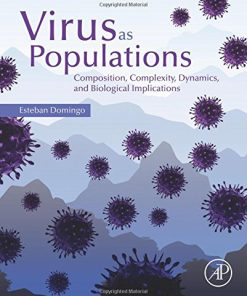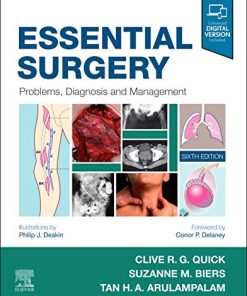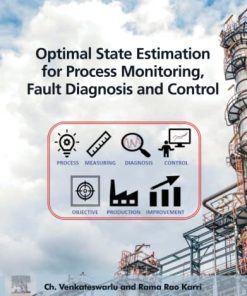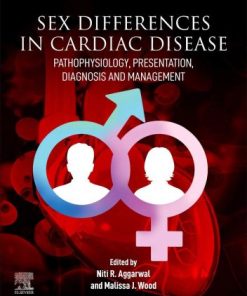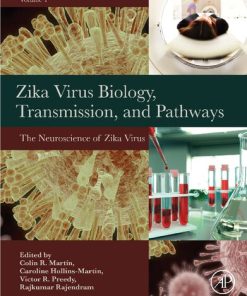(EBook PDF) Zika Virus Impact Diagnosis Control and Models 1st edition by Colin Martin 0323903096 9780323903097 full chapters
$50.00 Original price was: $50.00.$25.00Current price is: $25.00.
Zika Virus Impact, Diagnosis, Control, and Models 1st edition by Colin R. Martin – Ebook PDF Instant Download/DeliveryISBN: 0323903096, 9780323903097
Full download Zika Virus Impact, Diagnosis, Control, and Models 1st edition after payment
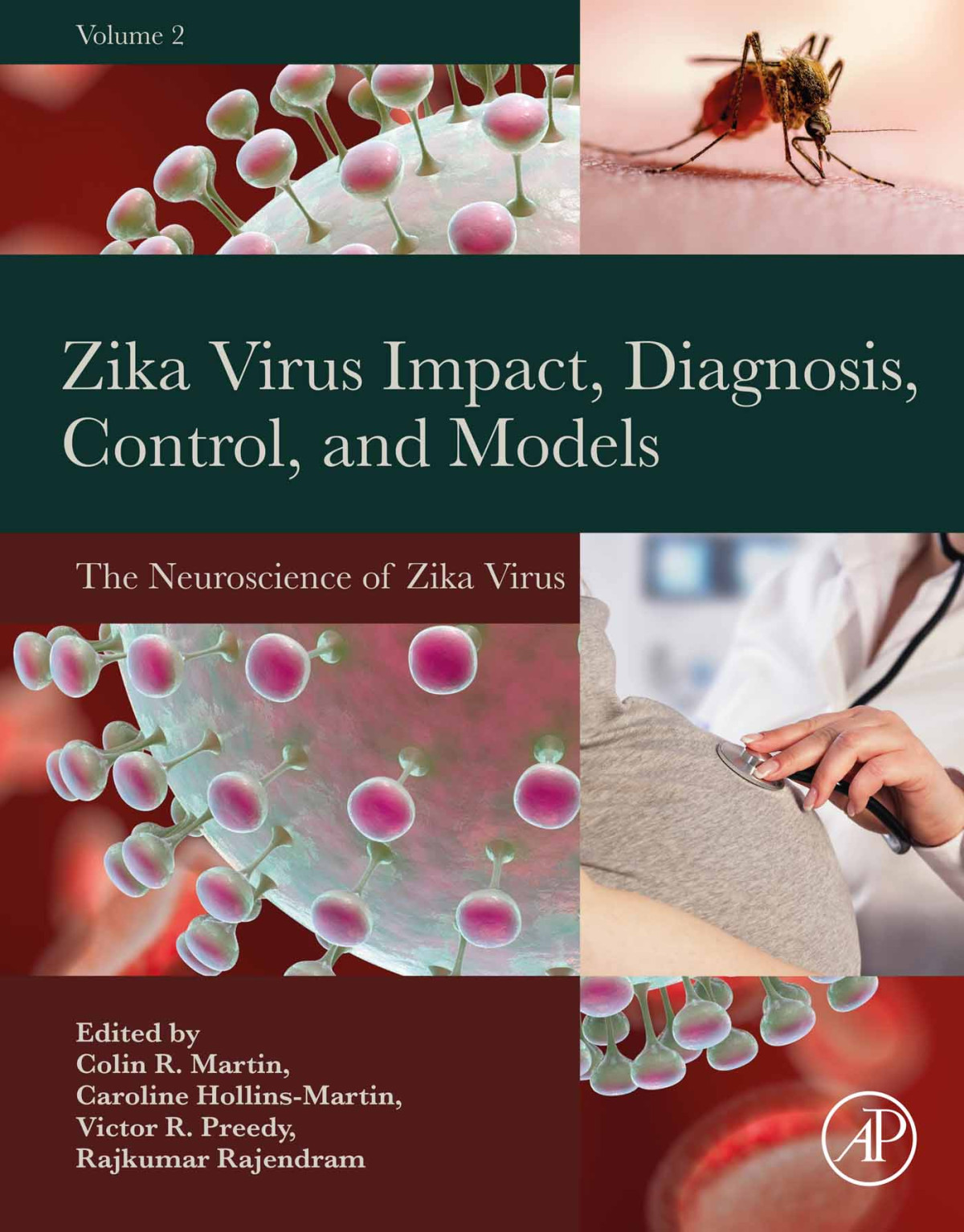
Product details:
ISBN-10 : 0323903096
ISBN-13 : 9780323903097
Author: Colin Martin
Zika Virus Impact, Diagnosis, Control, and Models: Volume Two: The Neuroscience of Zika examines diagnosis, vaccines, and potential therapy methods for Zika virus syndrome. The book also details the neuroscience of Guillain-Barré syndrome, its effects and neuromuscular rehabilitation. It is designed to help readers better understand detection, therapies for Zika virus, preventative vaccines, diagnosis and associated microcephaly. Chapters on models enable further research and understanding. This book has applicability for neuroscientists, neurologists, virologists and anyone working to better understand the evolution and pathogenesis of Zika virus-related conditions.
Zika Virus Impact, Diagnosis, Control, and Models 1st Table of contents:
Section A: Zika virus: Setting the scene
Chapter 1: How Zika virus emerged and spread worldwide
Abstract
African origin of Zika virus and its dispersion to Asia
Introduction of ZIKV in Oceania
Introduction of ZIKV in the Americas
Reintroduction of ZIKV in Africa
Policy and procedures
Mini-dictionary of terms
Key facts
Summary points
Chapter 2: Clinical neurological spectrum of adult and congenital ZIKV infection: An overview of virology, pathogenesis, and management
Abstract
Virology of Zika virus
Pathogenesis of Zika virus
Clinical management of ZIKA infections
Subsection policy and procedures
Mini-dictionary of terms
Key facts of Zika virus neurological manifestations
Key facts of congenital ZIKV syndrome
Summary points
Chapter 3: Classification of Zika virus sequences with respect to their species and subspecies
Abstract
Introduction
Zika virus sequences from African countries
Zika virus sequences from the Asian region
Evolution of the Asian lineage
Spread of the Asian lineage to Pacific and Americas
The proposition of three lineages
Conclusion
Policy and procedures
Mini-dictionary of terms
Key facts of Zika virus lineage
Summary points
Chapter 4: Health knowledge about Zika virus: Brazil aspects
Abstract
Introduction
Public health response on vector control: Communicational strategies and perceptions of risk
Advice to delay pregnancy as a public health strategy
Awareness and knowledge about Zika virus in Brazil
Consequences of the Zika virus epidemics on health services response and on reproductive behaviors
Conclusion
Policy and procedures
Mini-dictionary of terms
Key facts of Zika virus knowledge in Brazil
Summary points
Chapter 5: Zika virus infection and replication organelle biogenesis
Abstract
Introduction
Zika virus infection induces intracellular membrane remodeling and viral replication organelle formation
Viral proteins required for viral replication organelle biogenesis
ER membrane proteins involved in the formation of viral replication organelle
Endosomal sorting complex required for transport-mediated membrane invagination and fission
Autophagic machinery is activated in the ZIKV-infected cells
Membrane lipids involved in the formation of viral replication organelle
Concluding remarks
Policy and procedures
Mini-dictionary of terms
Key facts of virus replication organelle biogenesis
Summary points
Section B: Microcephaly and congenital
Chapter 6: Microcephaly: Zika and other congenital infections
Abstract
Microcephaly and TORCH agents
Development of microcephaly in congenital infections
Pathogen characteristics
The pathogenesis of congenital infections
Policy and procedures
Mini-dictionary of terms
Key facts on microcephaly secondary to intrauterine infections
Summary points
Chapter 7: Zika and impact on the nervous system in children
Abstract
Introduction
Epidemiology
Clinical manifestations
Congenital Zika virus infection
Neurological complications associated with Zika infection
Neuropathogenesis
Diagnosis
Management
Prevention
Mini-dictionary of terms
Key facts
Summary points
Chapter 8: Use of induced pluripotent stem cells and cerebral organoids to profile Zika virus infection: Features and findings
Abstract
Acknowledgments
Introduction
Experimental models to study neurological diseases
Perspectives and conclusions
Policy and procedures
Mini-dictionary of terms
Key facts
Summary points
Chapter 9: Zika, miRNAs, and microcephaly genes
Abstract
Introduction
Microcephaly genes
Microcephaly genes
MCPH genes and the miRs connection
Summary points
Chapter 10: Adherens junctions and cell polarity: What they are and how they relate to congenital Zika virus syndrome
Abstract
Acknowledgments
Cadherin-based adherens junctions and neural development
Cell polarity and symmetric versus asymmetric cell division
Flaviviruses and their impact on the expression and distribution of cell adhesion molecules
Current knowledge on the impact of N-cadherin-based AJs and apical-basal polarity of RGCs in ZIKV-induced neuropathology
Policy and procedures
Mini-dictionary of terms
Key facts of neurodevelopmental disorders
Summary points
Section C: Guillain-Barré syndrome
Chapter 11: Severe Guillain-Barré syndrome
Abstract
Introduction
Pathophysiology of Guillain-Barré syndrome
Clinical presentation
Severe GBS
Laboratory tests
Treatment
Policy and procedures: Diagnosis and treatment of Guillain-Barré syndrome
Mini-dictionary of terms
Key facts of plasma exchange
Summary points
Chapter 12: Oxidative stress in Guillain-Barré syndrome and linkage with neurology
Abstract
Introduction
Oxidative stress in demyelinating diseases
Free radicals and enzymatic antioxidation in GBS
GBS and lipophilic antioxidants
Uric acid, albumin, and haptoglobin as the antioxidant substrate in patients with GBS
T cell activity in GBS
Policy and procedures
Mini-dictionary of terms
Key facts of oxidative stress in GBS
Summary points
Chapter 13: Neuromuscular effects and rehabilitation in Guillain-Barré syndrome
Abstract
Introduction
Pharmacological treatment
Multidisciplinary rehabilitation
Exercise
Neuromuscular electrical stimulation
Virtual motor rehabilitation system
Safety
Policy and procedures
Mini-dictionary of terms
Key facts of neuromuscular rehabilitation in GBS
Summary points of neuromuscular rehabilitation in GBS
Chapter 14: Postinfectious demyelinating diseases: Guillain-Barré syndrome and beyond
Abstract
Introduction
Zika virus and peripheral nervous system inflammatory and demyelinating diseases
Zika virus and central nervous system inflammatory and demyelinating diseases
Challenges in the diagnosis of ZIKV and the role of other flavivirus infection
Conclusions
Policy and procedures
Mini-dictionary of terms
Key facts
Summary points
Chapter 15: Linking in placental alterations, Zika virus, and Guillain-Barré syndrome
Abstract
Introduction
The placenta and vertical transmission
Placental permissiveness to ZIKV
Histopathological aspects and changes in ZIKV-infected placentas
Cell subpopulations and cytokines in ZIKV-infected placentas
The Guillain-Barré syndrome
The clinical of GBS
The GBS associated with ZIKV infection
Conclusion
Policy and procedures
Mini-dictionary of terms
Key facts of ZIKV-infected placentas and GBS associated to ZIKV
Summary points
Section D: Case studies and short reports
Chapter 16: Case study: Neuroimaging of adults and Zika virus
Abstract
Introduction
Case study
Acute disseminated encephalomyelitis
Imaging findings of acute disseminated encephalomyelitis
Acute disseminated encephalomyelitis and Zika virus
Conclusion
Policy and procedures
Mini-dictionary of terms
Key facts of Zika virus infection complicated by acute disseminated encephalomyelitis
Summary points
Chapter 17: Case study: Magnetic resonance imaging and babies with Zika virus infection
Abstract
Introduction
Case study
Transmission and pathogenesis
Clinical manifestations of congenital Zika syndrome
Conclusion
Policy and procedures
Mini-dictionary of terms
Key facts of imaging of congenital Zika syndrome
Summary points
Chapter 18: A case study of Guillain-Barre syndrome associated with Zika virus infection
Abstract
Setting
Clinical case study of Guillain-Barre syndrome associated with Zika virus infection
Hospital course
Policy and procedures
Mini-dictionary of terms
Summary points
Chapter 19: Clinical manifestations and outcomes of Guillain-Barre syndrome complicating Zika virus infection
Abstract
Introduction
Clinical description
Laboratory test
Treatment and recovery
Discussion
Policy and procedures: Diagnostic criteria of GBS
Mini-dictionary of terms
Key facts of Guillain-Barré syndrome
Summary points
Chapter 20: Auditory brainstem in Zika virus: Insights about brain development in microcephaly
Abstract
Introduction
Brainstem auditory evoked potentials in microcephaly caused by the Zika virus
The brainstem in congenital Zika virus syndrome
Zika pathogenesis and brainstem ontogenesis
Policy and procedures
Mini-dictionary of terms
Key facts of brainstem auditory evoked potentials
Summary points
Section E: Methods, biomarkers, and diagnosis
Chapter 21: Magnetic resonance imaging use in detecting neurological abnormalities in Zika virus infection
Abstract
Introduction
Congenital Zika syndrome
Neurological complications of postnatal acquired Zika virus infection
Conclusion
Policy and procedures
Mini-dictionary of terms
Key facts of imaging of neurological complications of Zika virus infection
Summary points
Chapter 22: Magnetic modulation biosensing: How it works and how it can be used to detect the Zika virus
Abstract
Introduction
State-of-the-art ZIKV serological and antigenemia assays
Surface-enhanced Raman spectroscopy (SERS)-based sandwich immunoassays
Magnetic modulation biosensing (MMB)-based assay
ZIKV IgM and IgG MMB-based assay vs EUROIMMUN ELISA (analytical sensitivity and dynamic range)
ZIKV IgM and IgG MMB-based assay vs EUROIMMUN ELISA (clinical sensitivity, specificity, and cross-reactivity)
Future research
Policy and procedures
Mini-dictionary of terms
Key facts of ZIKV serological assays
Summary points
Chapter 23: RNA extraction techniques of different body fluids for Zika virus: Blood, genitourinary specimens, saliva, and other relevant fluids
Abstract
Introduction
Blood products
Genitourinary and gastrointestinal specimens
Additional fluids
Policy and procedures
Mini-dictionary of terms
Key facts of viral diagnostics
Summary points
Chapter 24: Saliva and urine analysis of Zika virus using loop-mediated isothermal amplification (LAMP)
Abstract
Introduction
Zika virus in saliva
Zika virus in urine
Loop-mediated isothermal amplification (LAMP)
Zika virus detection through LAMP
Conclusions
Policy and procedures
Mini-dictionary of terms
Key facts
Summary points
Chapter 25: Graphene-based biosensors for the detection of Zika virus
Abstract
Introduction
Graphene-based biosensors
Diagnostics methods for detecting Zika virus
Graphene-based biosensors for the detection of ZIKV
Current challenges and conclusion
Policy and procedure: Testing for Zika virus infections
Mini-dictionary of terms
Key facts of graphene biosensors
Summary points
Chapter 26: The ZIKV Detect IgM Capture ELISA
Abstract
Introduction
Composition and assay protocol of the ZIKV Detect 2.0 IgM Capture ELISA
Results classification
Performance of the InBios ZIKV Detect 2.0 IgM Capture ELISA compared with the original version
Other studies using InBios ZIKV Detect IgM Capture ELISA
Applicability of the InBios ZIKV Detect 2.0 IgM Capture ELISA to clinical diagnostic testing
Regulatory status and labeling
Performance of the InBios ZIKV Detect IgM Capture ELISA in proficiency testing
Policy and procedures
Mini-dictionary of terms
Key facts of InBios ZIKV Detect IgM 2.0 Capture ELISA
Summary points
Chapter 27: Quantum dot-based fluoroassays for Zika
Abstract
Introduction
Basic principles of QDs and their potential to bioanalysis
Zika QD-based detection methods
Policy and procedures
Mini-dictionary of terms
Key facts of quantum dot-based assays
Summary points
Chapter 28: Serological detection of specific IgA antibodies against Zika virus nonstructural protein 1 contributes to diagnosis of acute Zika virus infections
Abstract
Introduction
Kinetic profiles of specific anti-ZIKV antibodies of classes IgM and IgG
The challenge: Diagnosing ZIKV infection based on the serological evidence obtained with a single serum sample
Kinetics of specific IgA antibodies in acute ZIKV infection
Can anti-ZIKV IgA antibodies contribute to the detection of acute ZIKV infection in an endemic setting?
Added value of specific IgA antibodies to the serodiagnosis of acute ZIKV infection
Policy and procedures
Mini-dictionary of terms
Key facts
Summary points
Chapter 29: Serological algorithms: How they can be used for differentiating ZIKV from DENV infection
Abstract
Introduction
Antibody response after flavivirus infection
Serological methods used to detect anti-ZIKV antibodies
Cross-reactivity of anti-E and NS1 antibody between ZIKV and DENV
Current algorithms proposed for differentiation
Future perspectives and challenges
Mini-dictionary of terms
Key facts
Summary points
Section F: Control, vaccines, and treatments
Chapter 30: Aedes aegypti and the use of natural molecules for its control: Implications in the decrease of Zika disease
Abstract
Acknowledgments
Introduction
What should be considered as a natural molecule with pesticide activity?
Insecticidal and repellents are toxins, no matter its origin
Multieffect of natural molecules with potential use against Ae. aegypti
Market availability of pesticides made with NaM
Challenges of producing marketable products from NaM
Search of new compounds with insecticidal or repellent activity
The implications of using natural molecules on the reduction of the incidence of Zika disease
Mini-dictionary of terms
Key facts of the use of natural molecules for mosquito control
Summary points
Chapter 31: Strategies of Zika virus control with larvicides and their toxic potential: A focus on pyriproxyfen
Abstract
Introduction
Policy and procedures
Mini-dictionary of terms
Key facts of virus incidence and control strategies
Summary points
Chapter 32: Larvicides: Plant oils and Zika control
Abstract
Introduction
Requirement of plant-derived/essential oil-based insect repellents
Plant essential oils for mosquito repellency
Methods of extraction of plant-based repellents
Promising developments in plant-based repellents and efficacy of plant oils to control different vector-borne (mosquito) diseases
Laboratory setup and equipment required for essential oil testing
Future research areas of using essential oils for mosquito control
Conclusion
Policy and procedures
Mini-dictionary of terms
Key facts of plant essential oils (EOs)
Summary points
Chapter 33: Pyridobenzothiazolones as anti-flavivirus agents: Impact on Zika virus
Abstract
A brief introduction
The discovery of PBTZ 1 (HeE1-2Tyr) as anti-flavivirus inhibitor
From the hit identification to the hit explosion: Design of potent, selective, and broad-spectrum anti-flavivirus PBTZs
Unraveling the mechanism of action of PBTZs
Impact of PBTZs on ZIKV drug discovery and conclusions
Policy and procedures
Mini-dictionary of terms
Key facts of Zika treatment
Summary points
Chapter 34: The development of human monoclonal antibodies against Zika virus
Abstract
Introduction
Convalescent serum
Human monoclonal antibodies (mAbs)
Antibody-dependent enhancement of infection (ADE)
Summary
Policy and procedures: Isolation of mAbs from infected humans
Mini-dictionary of terms
Key facts about neutralizing antibodies
Summary points
Chapter 35: The Zika virus NS1 protein as a vaccine target
Abstract
Introduction
Current available flavivirus vaccines
Correlates of protection
Protection mediated by NS1-specific antibodies
The mechanism of NS1 antibody-based protection
Fc-mediated effector functions of ZIKV glycoprotein-specific antibodies
Candidate ZIKV vaccines
Summary
Policy and procedures
Mini-dictionary of terms
Key facts of antibodies that target the NS1
Key facts of flavivirus envelope glycoproteins
Summary points
Chapter 36: Zika vaccines must prevent sexual transmission
Abstract
Introduction
Current vaccine effort to quell ZIKV
Summary points
Chapter 37: Nucleoside analogue inhibitors for Zika virus infection
Abstract
Introduction
Chemistry
Enzymology
Virology
Conclusion
Policy and procedures: Cell assays for evaluating anti-ZIKV compounds in vitro
Mini-dictionary of terms
Key facts of nucleoside analogues for ZIKV
Summary points
Chapter 38: Medicinal plants as promising source of natural antiviral substances against Zika virus
Abstract
Introduction
Molecular tools to assess anti-ZIKV compounds
Plant-derived antivirals against ZIKV
Concluding remarks
Policy and procedures: Method to assess plant-derived antivirals in vivo
Mini-dictionary of terms
Keys facts of phytochemicals evaluated in vitro and in vivo
Summary points
Chapter 39: Protein kinase C as a target in the control of viruses and implication for Zika virus
Abstract
Introduction
PKC structure and classification
PKC activation and functions
Role of PKC on viral infections
PKC implications for Zika virus and other related flaviviruses
Modulation of PKC for the control of viruses
Conclusions
Policy and procedures
Mini-dictionary of terms
Key facts of protein kinases C
Summary points
Chapter 40: Nanotechnology applied in the control and diagnosis of Zika virus and its vectors
Abstract
Introduction
Nanotechnological strategies for Zika virus diagnosis
Nanotechnological strategies for control of ZIKV vectors
Nanotechnological strategies for antiviral and vaccine development
Conclusion
Policy and procedures
Mini-dictionary of terms
Key facts of nanomedicine and nanoparticles
Summary points
Section G: Models and modeling
Chapter 41: Neonatal microcephaly and humanized mouse models for Zika viral pathogenesis and immunity
Abstract
Acknowledgments
Introduction
Humanized mice
Zika viral human immune responses in hu-BLT mice
ZIKV viral infection and human immune responses in DRAG-hu mice
ZIKV infection of human hematopoietic cells and implications for viral persistence
A neonatal Rag2−/− γc−/− mouse model for ZIKV microcephaly
Policies and procedures
Mini-dictionary of terms
Key facts
Summary points
Chapter 42: Use of liver cells to discover novel peptides for anti-Zika strategies
Abstract
Introduction
Hepatotoxicity is a major hurdle in drug development
Liver cells as the model cell system for ZIKV studies
Liver complications in ZIKV-infected patients
Anti-ZIKV drug development
Concluding remarks
Policy and procedures
Mini-dictionary of terms
Key facts: Drug-induced liver injury (DILI)
Summary points
Chapter 43: In vivo mouse models to investigate the microcephaly associated with Zika virus
Abstract
Introduction
Animal models of ZIKV infection
Vertical transmission of ZIKV
Direct administration of ZIKV in utero
Other animal models to study ZIKV infection
Conclusions
Policy and procedures: Producing mouse models of ZIKV infection
Mini-dictionary of terms
Key facts of brain development
Summary points
Chapter 44: Zika virus infection with primates: Fetal outcomes
Abstract
Introduction
Nonhuman primate animal models for ZIKV study
In utero ZIKV exposure and neuropathology in primate fetus
Olive baboon as a nonhuman primate model for ZIKV pathogenesis
Cortical neuropathology in the fetal baboon
Radial glial fibers, neuronal migration, and differentiation in the fetal brain
Gyri/sulci formation in the fetal cortex
Oligodendrocyte differentiation, maturation, and myelination
Neuroinflammation in the fetal brain
Placental inflammation, vascular deficiency, and neuropathology
People also search for Zika Virus Impact, Diagnosis, Control, and Models 1st:
zika virus impact
zika virus model
zika virus diagnosis
zika virus impact on society
zika impact of climate change
Tags:
Zika Virus,Virus Impact,Diagnosis,Control,Colin Martin
You may also like…
Medicine - Surgery
Essential Surgery-Problems, Diagnosis and Management 6th Edition
Politics & Philosophy - Government & Politics
Uncategorized
Computers & Technology
Optimal State Estimation for Process Monitoring, Fault Diagnosis and Control 1st Edition
Medicine
Zika Virus Biology, Transmission, and Pathways Volume 1: The Neuroscience of Zika Colin R. Martin
Uncategorized




